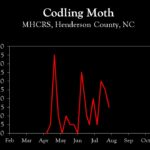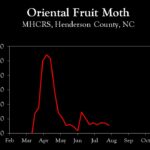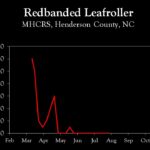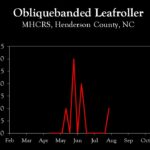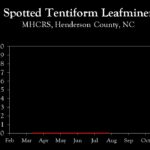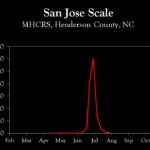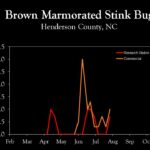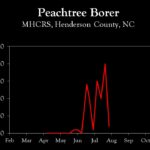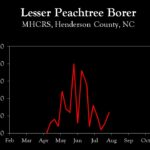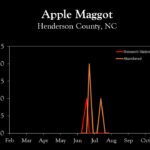WNC Orchard Insect Pest Populations – August 1, 2024
go.ncsu.edu/readext?1017033
en Español / em Português
El inglés es el idioma de control de esta página. En la medida en que haya algún conflicto entre la traducción al inglés y la traducción, el inglés prevalece.
Al hacer clic en el enlace de traducción se activa un servicio de traducción gratuito para convertir la página al español. Al igual que con cualquier traducción por Internet, la conversión no es sensible al contexto y puede que no traduzca el texto en su significado original. NC State Extension no garantiza la exactitud del texto traducido. Por favor, tenga en cuenta que algunas aplicaciones y/o servicios pueden no funcionar como se espera cuando se traducen.
Português
Inglês é o idioma de controle desta página. Na medida que haja algum conflito entre o texto original em Inglês e a tradução, o Inglês prevalece.
Ao clicar no link de tradução, um serviço gratuito de tradução será ativado para converter a página para o Português. Como em qualquer tradução pela internet, a conversão não é sensivel ao contexto e pode não ocorrer a tradução para o significado orginal. O serviço de Extensão da Carolina do Norte (NC State Extension) não garante a exatidão do texto traduzido. Por favor, observe que algumas funções ou serviços podem não funcionar como esperado após a tradução.
English
English is the controlling language of this page. To the extent there is any conflict between the English text and the translation, English controls.
Clicking on the translation link activates a free translation service to convert the page to Spanish. As with any Internet translation, the conversion is not context-sensitive and may not translate the text to its original meaning. NC State Extension does not guarantee the accuracy of the translated text. Please note that some applications and/or services may not function as expected when translated.
Collapse ▲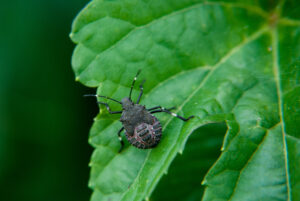 Based on the codling moth degree day (DD) model, emergence of second generation adults is nearly complete in Henderson County and locations at similar elevations (about 2,000 ft), and third generation adults are emerging in lower elevation orchards. Model predictions become less accurate later in the season, so pheromone trap captures are an important tool to help assess the need for insecticide applications at this time of the year. However, history shows that the potential for late-season damage is very low if problems (i.e., damaged fruit) have not been observed by the end of the second generation.
Based on the codling moth degree day (DD) model, emergence of second generation adults is nearly complete in Henderson County and locations at similar elevations (about 2,000 ft), and third generation adults are emerging in lower elevation orchards. Model predictions become less accurate later in the season, so pheromone trap captures are an important tool to help assess the need for insecticide applications at this time of the year. However, history shows that the potential for late-season damage is very low if problems (i.e., damaged fruit) have not been observed by the end of the second generation.
We are also approaching that time of the year when oriental fruit moth (OFM) can be an issue in some orchards. An application of sprayable OFM pheromone in mid August has been common among those not using full-season mating disruption, but pyrethroid use for BMSB has also controlled OFM. Hence, keeping an eye on OFM pheromone trap captures is important where pyrethroid use declines.
The brown marmorated stink bug adult emergence DD model predicts that first generation adults are now beginning to emerge in Henderson County and similar elevations. Over the next week, about 25% of the population will have emerged. In Cleveland County and similar elevations, about 50% of the generation has emerged, and this will increase to 75% over the next week. Over the past few years BMSB populations have declined in this region, and overwintering adult numbers have been low this year. Unfortunately we do not have a good estimate of the potential intensity of first generation adult populations, but hopefully we will have a better idea over the next couple of weeks.
Despite the unknown pest status of BMSB at this time, preventive control in the next week should be considered on the most susceptible cultivars, which include late-maturing cultivars such as Granny Smith, Pink Lady, and Rome. Conversely, cultivars harvested by the first week of September have shown low potential for BMSB damage, and the need for insecticide applications on those cultivars is questionable.
Pyrethroids remain the most effective and inexpensive insecticides for BMSB control. In general there is no noticeable differences in the efficacy of most recommended products (see below), with exception of bifenthrin (Brigade), which has shown longer residual activity than other products. Considering the wide range of preharvest intervals for recommended insecticides, this will surely be a key factor in product choice.
Insecticides recommended for brown marmorated stink bug on apples:
| INSECTICIDE | PHI (days) | RELATIVE EFFICACY (1=poor, 5=excellent) | RATE/ACRE | MAX PER SEASON |
| Pyrethroids | ||||
| Baythroid (beta-cyfluthrin) | 7 | 4 | 2.4 fl oz | 2.8 fl oz |
| Brigade (bifenthrin)* | 14 | 5 | 9.6 fl oz | 28.8 fl oz |
| Danitol (fenpropathrin) | 14 | 4 | 20 fl oz | 42.6 fl oz |
| Karate/Warrior (lambda-cyhalothrin) | 21 | 4 | 2.5 fl oz | 12.8 fl oz |
| Mustang Maxx (zeta-cypermethrin) | 14 | 4 | 4 fl oz | 24 fl oz |
| Proaxis (gamma-cyhalothrin) | 21 | 4 | 5.1 fl oz | 20.8 fl oz |
| Tombstone (cyfluthrin) | 7 | 4 | 2.4 fl oz | 12.8 fl oz |
| Neonicotinoids | ||||
| Actara (thiamethoxam) | 35 | 4 | 4.5 oz | 16.5 oz |
| Belay (chlothianidin) | 7 | 4 | 6 fl oz | 12 fl oz |
| Premixes | ||||
| Besiege (chlorantraniliprole + lamda-cyhalothrin) | 21 | 4 | 10 fl oz | 31 fl oz |
| Endigo (lamda-cyhalothrin + thiamethoxam) | 35 | 4 | 6 fl oz | 28 fl oz |
| Leverage (imidacloprid + beta-cyfluthrin) | 7 | 4 | 2.8 fl oz | 2.8 fl oz |
| Voliam Flexi (chlorantraniliprole + thiamethoxam) | 35 | 4 | 6 fl oz | 16 fl oz |
| *Brigade is the only bifenthrin product with apple on the label. | ||||
Learn more about southeastern apple insect pests at the Apple Insect Management page.
2024 Average Weekly Trap Captures
| HENDERSON COUNTY | |||
| Insects per trap | |||
| Jul 15 | Jul 22 | Jul 29 | |
| Codling moth | 3.0 | 2.5 | 1.5 |
| Oriental fruit moth | 14.5 | 14.0 | 11.0 |
| Tufted apple bud moth | 1.0 | 3.0 | 0.0 |
| Redbanded leafroller | 0.0 | 0.0 | 0.0 |
| Obliquebanded leafroller | 0.0 | 0.0 | 1.0 |
| Lesser appleworm | 0.0 | 0.0 | 0.0 |
| Apple maggot (research orchards) | 0.0 | 0.0 | 0.0 |
| Apple maggot (abandoned orchard) | 1.0 | 0.0 | 0.0 |
| Brown marmorated stink bug (commercial) | 0.7 | 0.3 | 1.0 |
| Brown marmorated stink bug (unsprayed research orchard) | 0.0 | 0.0 | 0.7 |
| Spotted tentiform leafminer | 0.0 | 0.0 | 0.0 |
| Dogwood borer | 38.0 | 33.0 | 28.0 |
| Peachtree borer | 10.0 | 20.0 | 2.0 |
| Lesser peachtree borer | 1.0 | 3.0 | 6.0 |
| San Jose scale | 17.5 | 5.0 | 2.5 |
*Note that these averages illustrate only the timing of insect emergence and fluctuations in populations, and are not representative of population levels in any given orchard. The only way to have an accurate assessment of an individual orchard’s populations is to set up traps in that orchard.
2024 Accumulated Degree Days
| HENDERSON COUNTY | ||||
| Jul 15 | Jul 22 | Jul 29 | ||
| Codling moth (Biofix: April 15) | 1665 | 1834 | 2026 | |
| Oriental fruit moth (Biofix: March 15) | 2393 | 2597 | 2829 | |
| Tufted apple bud moth (Biofix: April 15) | 2099 | 2303 | 2535 | |



